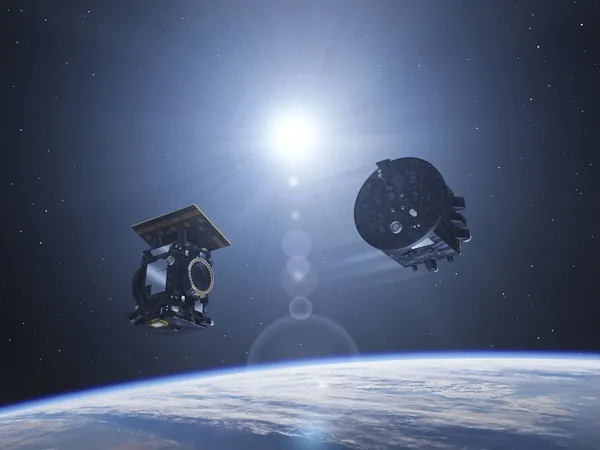
Proba-3's Groundbreaking Separation: A New Era in Precision Space Missions
2025-01-15
Author: Siti
Introduction
In a remarkable achievement for the European Space Agency (ESA), the Proba-3 mission reached a critical milestone on the night of January 14, 2025, when its two satellites successfully separated after six weeks of flying together. This historic separation marks the beginning of the world’s first precision formation-flying mission, a game changer for our understanding of the universe.
Mission Launch
Launched on December 5, 2024, aboard a four-stage PSLV-XL rocket from the Satish Dhawan Space Centre in India, the Proba-3 mission involves two spacecraft designed to work in tandem, creating artificial solar eclipses to study the solar corona—a phenomenon that has eluded scientists for years. The meticulous orchestration of this separation was managed by the dedicated ESA team at the European Space Security and Education Centre in Redu, Belgium. Utilizing four ground antennas located across Australia, Chile, and Spain, the team established communication with the satellites throughout their initial commissioning phase.
Separation Details
At precisely 23:00 GMT (00:00 CET on January 15), the satellites separated at 60,000 kilometers above Earth, moving at a velocity of 1 kilometer per second. Proba-3 mission manager Damien Galano explained the event: “The satellites were held together by a clamp-band, a reliable technology commonly used during launches. Once the clamp released, the satellites started to drift apart.”
Unique Operation
Interestingly, while the clamp-band method is well-established, performing such a separation at the spacecraft level is rare. Most satellites are launched independently, making this operation quite unique. As they drift apart, the Proba-3 platforms will move up to 50 kilometers away from one another.
Monitoring and Positioning
In the coming week, engineers will closely monitor their relative positions, using onboard propulsion systems to control their drift and ultimately stabilize them into a secure configuration. This precise positioning is crucial, as in about two months, the satellites will fly just 150 meters apart—about the length of one and a half football pitches. They must maintain this formation down to a single millimeter for up to six hours at a time, demonstrating cutting-edge propulsion and navigation systems that utilize onboard autonomy.
Primary Goal of the Mission
The primary goal of this innovative mission is to facilitate artificial solar eclipses in orbit. The Occulter satellite will cast a shadow across the Coronagraph satellite's main optical instrument, enabling it to delve into the mysteries of the solar corona. Notably, the shadow, measuring just 8 centimeters across, must perfectly align with the Coronagraph despite the vast distance separating the two craft.
Future Implications
As the flight control team prepares for the mission’s operational phase, set to begin in March, the implications of this pioneering venture could significantly enhance our understanding of solar phenomena and advance space exploration technologies. The success of Proba-3 may pave the way for future missions that require unparalleled precision, transforming the way scientists observe and interact with cosmic events.
Conclusion
Stay tuned as this mission unfolds—who knows what new discoveries await us in the cosmos!

 Brasil (PT)
Brasil (PT)
 Canada (EN)
Canada (EN)
 Chile (ES)
Chile (ES)
 Česko (CS)
Česko (CS)
 대한민국 (KO)
대한민국 (KO)
 España (ES)
España (ES)
 France (FR)
France (FR)
 Hong Kong (EN)
Hong Kong (EN)
 Italia (IT)
Italia (IT)
 日本 (JA)
日本 (JA)
 Magyarország (HU)
Magyarország (HU)
 Norge (NO)
Norge (NO)
 Polska (PL)
Polska (PL)
 Schweiz (DE)
Schweiz (DE)
 Singapore (EN)
Singapore (EN)
 Sverige (SV)
Sverige (SV)
 Suomi (FI)
Suomi (FI)
 Türkiye (TR)
Türkiye (TR)
 الإمارات العربية المتحدة (AR)
الإمارات العربية المتحدة (AR)